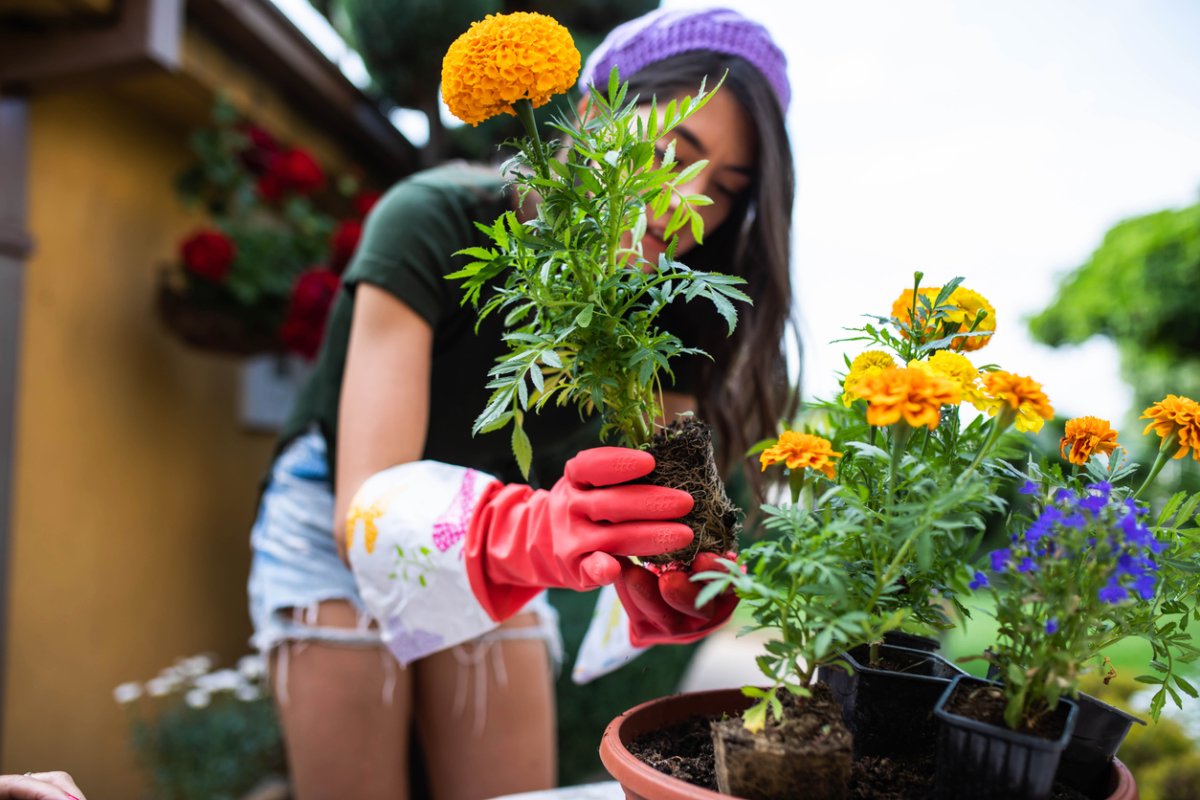We may earn revenue from the products available on this page and participate in affiliate programs. Learn More ›
By definition, annual flowering plants live for only one growing season, but they provide glorious color throughout most of that season. Most feature blooms of a wide variety of colors, shapes, and sizes that appear all summer long. Annual flowers pair well with perennial flowers, grasses, and other plants to provide a burst of attention-grabbing color.
Some differences between annual vs. perennial flowers are perennials’ ability to return year after year while annuals last only that one season, and perennials typically bloom for only part of the growing season while annuals often bloom all or most of the summer.
Most annual flowers do not come back the following year, but some may return in warm areas or reseed, producing new flowers the next season. A few grow well indoors, which means they can stay alive year round. Annuals usually cost less and require less maintenance than perennials, but most need to be sowed from seed or bought and planted each year.
RELATED: Solved! What is a Perennial?
1. Artist Blue Ageratum
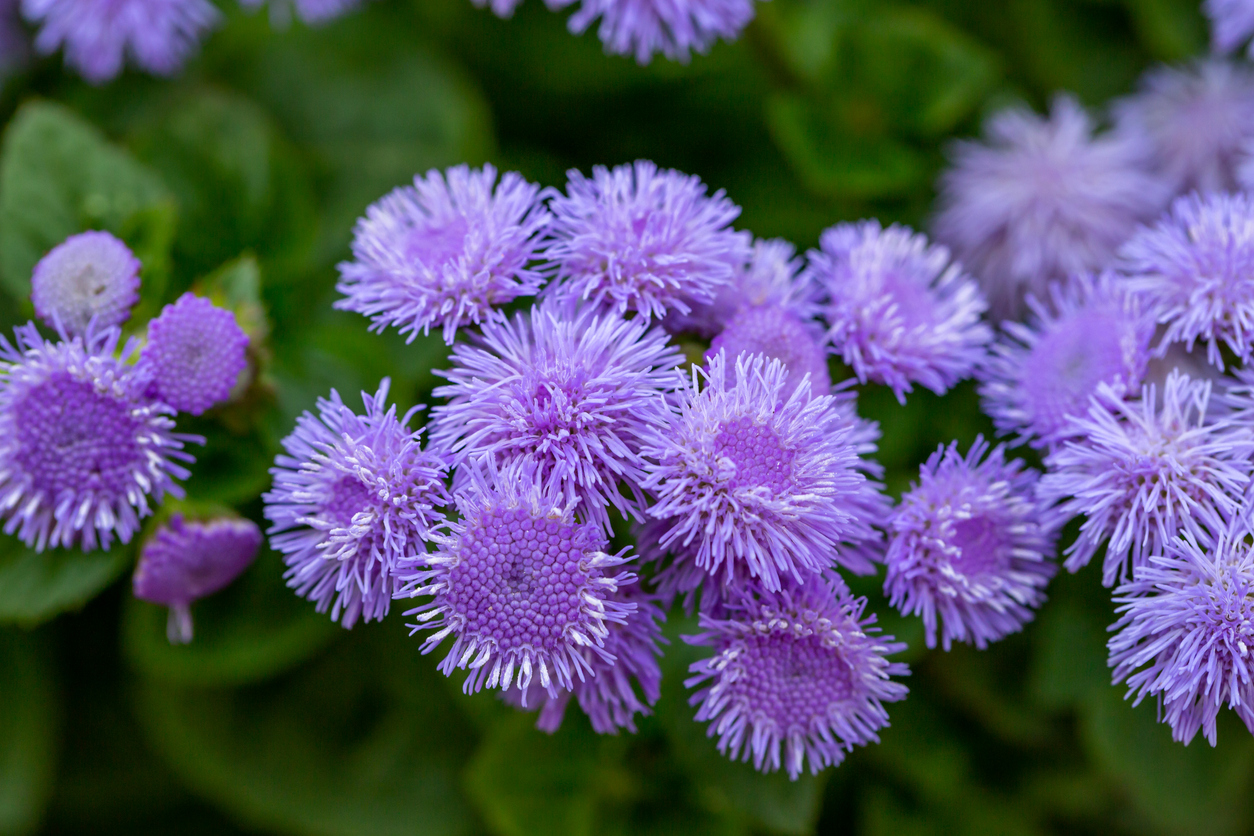
Popular for its low, mounding habit and delicate purple blooms, Artist Blue ageratum is one of the longest-blooming annual flowering plants. Clusters of purple pom-poms cover the 8- to 10-inch plant, which thrives in full sun and tolerates partial shade. This drought-tolerant native hybrid spreads 10 to 12 inches, filling in borders or containers with purple annual flowers. It doesn’t require deadheading, although doing so can encourage additional flowering. One more benefit is that pollinators like these flowers, too!
Best For: Borders and containers in full sun or partial shade.
2. Tuberous Begonia
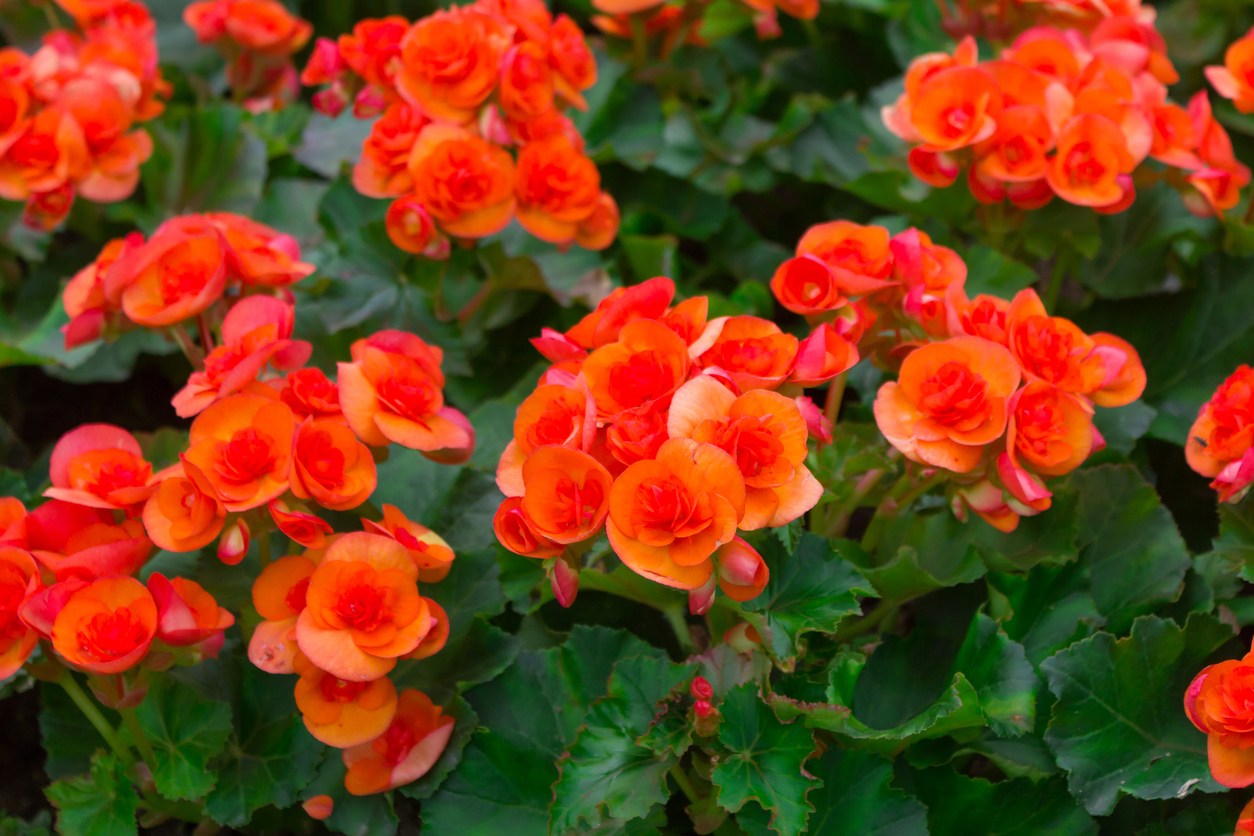
Tuberous begonias are popular annual flowers for shade. Begonias produce blooms in pink, white, yellow, orange, or red—with green or bronze foliage—throughout summer. Most varieties work well in borders, containers, and hanging baskets. They prefer rich, well-draining soil, cannot tolerate wet feet, and need protection from the cold and wind.
Best For: Brightening up shady areas in garden beds or containers.
3. Impatiens walleriana
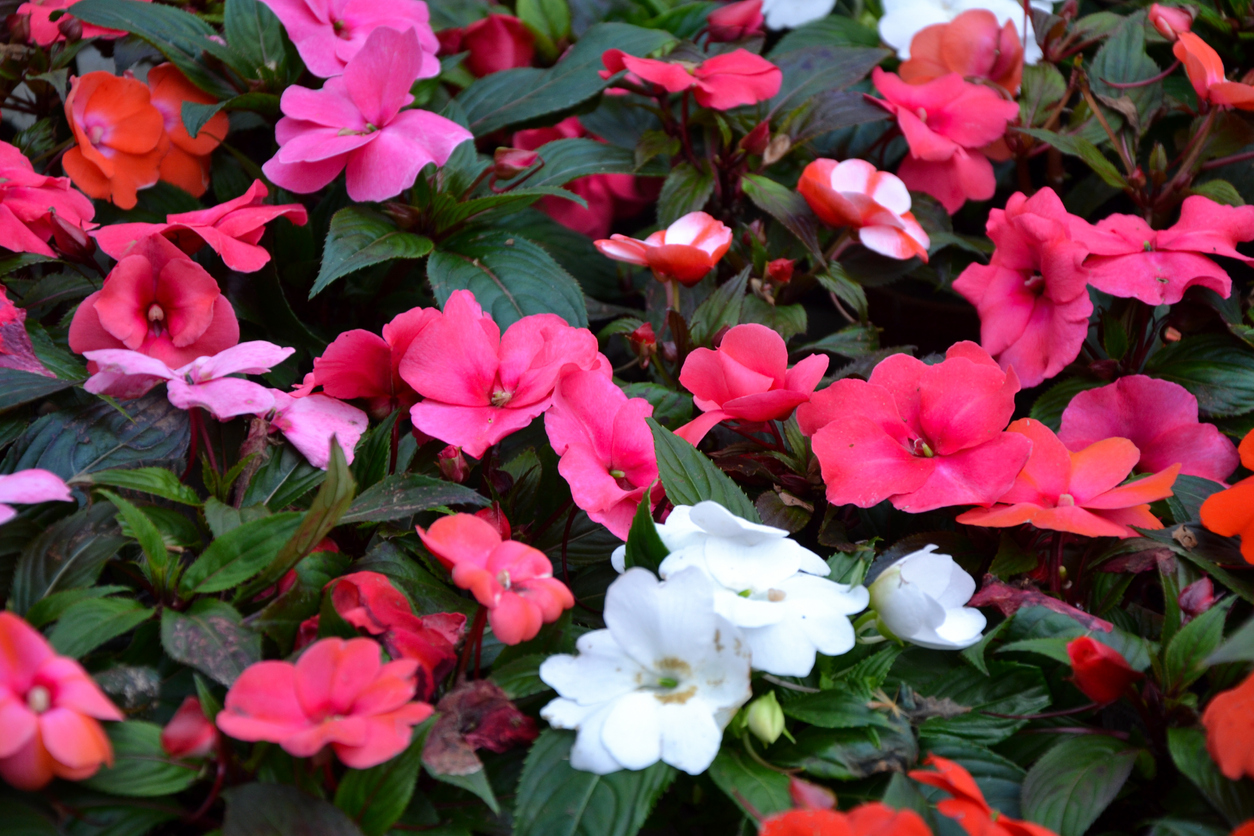
Commonly found at plant nurseries, Impatiens walleriana is an annual flower that lights up part- to full-shade areas with masses of pink, rose, lilac, purple, salmon, white, and multicolored flowers. Ideal for containers, hanging baskets, and borders, impatiens grows 6 inches to 24 inches tall and up to 24 inches wide. Known to wilt when too dry, they need moist, rich soil but won’t tolerate soggy conditions—or too much light. I. walleriana produces abundant flowers from spring to frost under the right conditions.
Best For: Shady spots of the garden that need a pop of color.
4. Zinnia
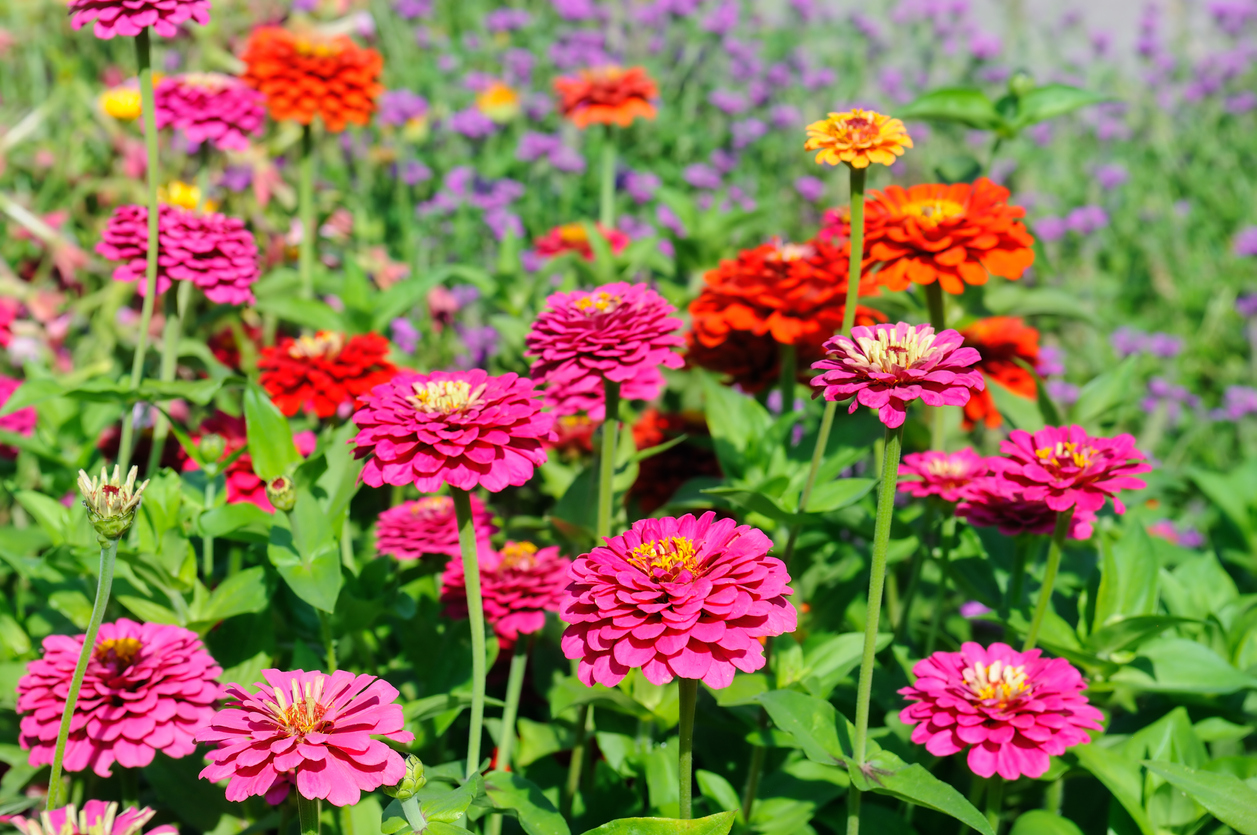
If you’re looking for long-lasting annual color, choose zinnias. These sun-loving annuals are easy to grow and reward minimal effort with plentiful blooms in a rainbow of colors. Zinnia flowers are available in single, semi-double, and double forms and globe, cactus, beehive, and pincushion shapes.
Shorter varieties work well as borders and in container gardens, where their cheerful colors make a big impact. Zinnias need full sun and prefer moderate moisture, tolerating most soil conditions. The plants should be watered at their bases, and fertilizing can produce more blooms.
Best For: Colorful full-sun gardens.
5. Sunflower
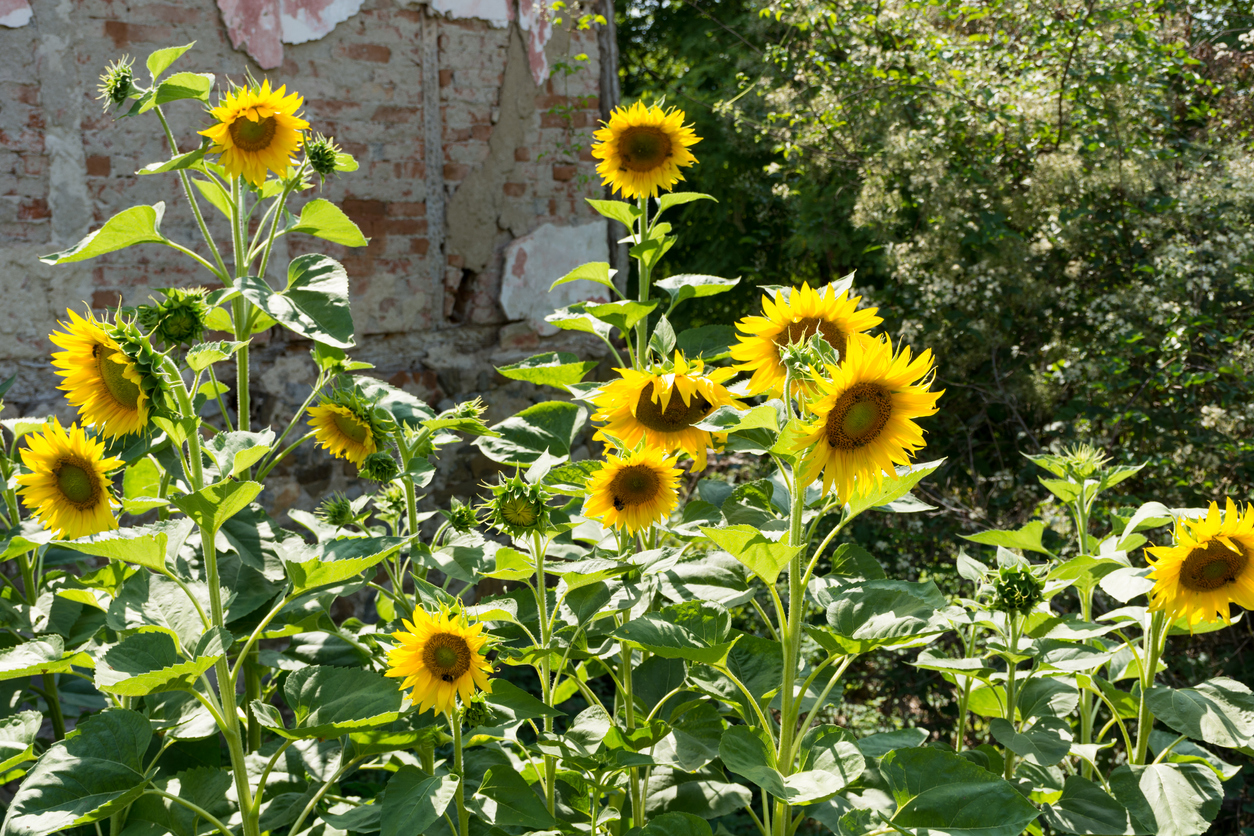
Add a little Van Gogh beauty to your garden with one of the tallest annual flowers for full sun. Some sunflower varieties reach heights over 16 feet, but others grow to just over 1 foot tall. While the most common color is yellow, sunflowers also come in red, orange, maroon, and brown.
Heat-tolerant and resistant to pests, these heliotropes attract pollinators and feed birds with their seeds. Sunflowers’ sturdy stems and large flower heads also make great cut flowers. They prefer well-draining soil that supports their long tap roots, and sheltering sunflowers from wind is helpful due to their height.
Best For: The backs of garden beds or against walls and fences.
6. Cosmos
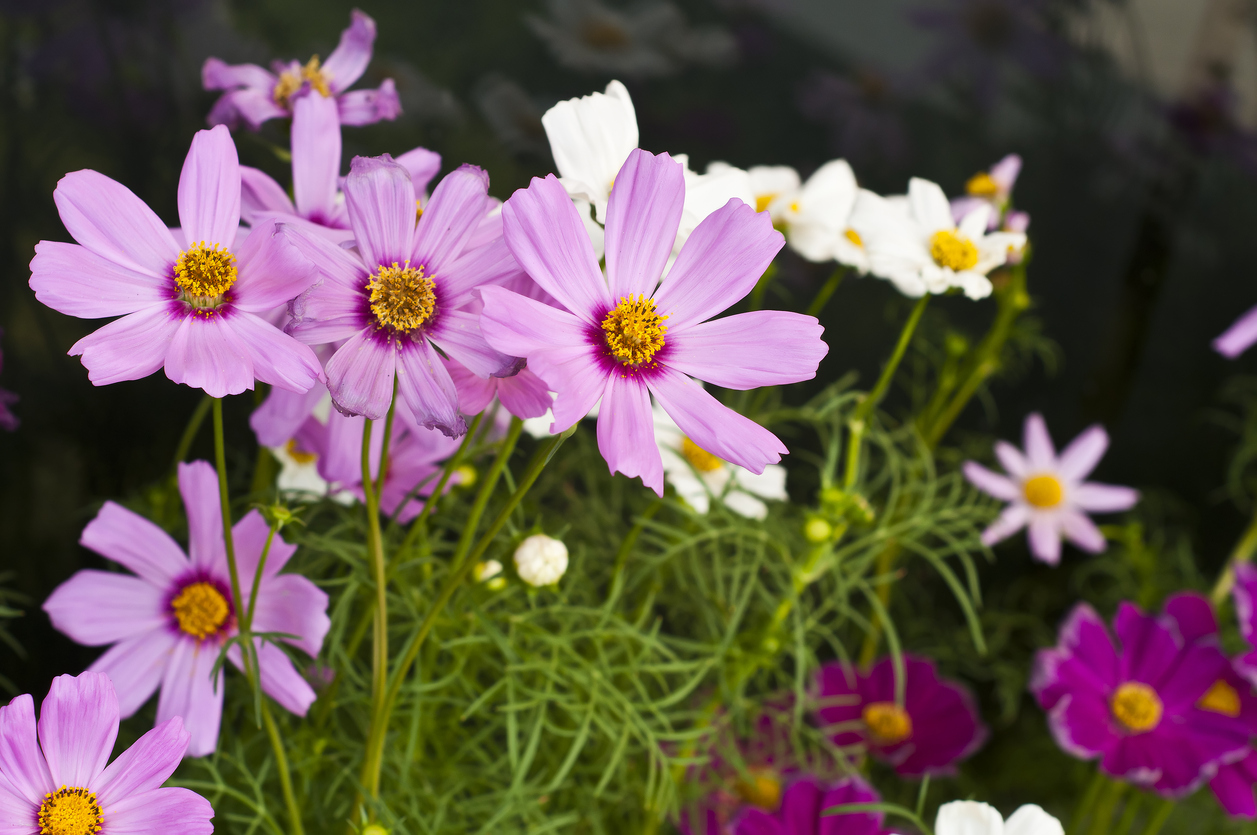
Another tall annual flower that makes an impression is cosmos. Its daisy-shaped flowers in pink, white, and lavender reach up to 6 feet tall on stalks with fern-like foliage, providing a delicate appearance when they sway in the wind. Cosmos tolerate most soil types, thrive in full sun, and make excellent cut flowers. However, when left to grow in the garden, they’ve been known to reseed.
Best For: Full-sun gardens and creating a stunning meadow effect.
7. Marigold
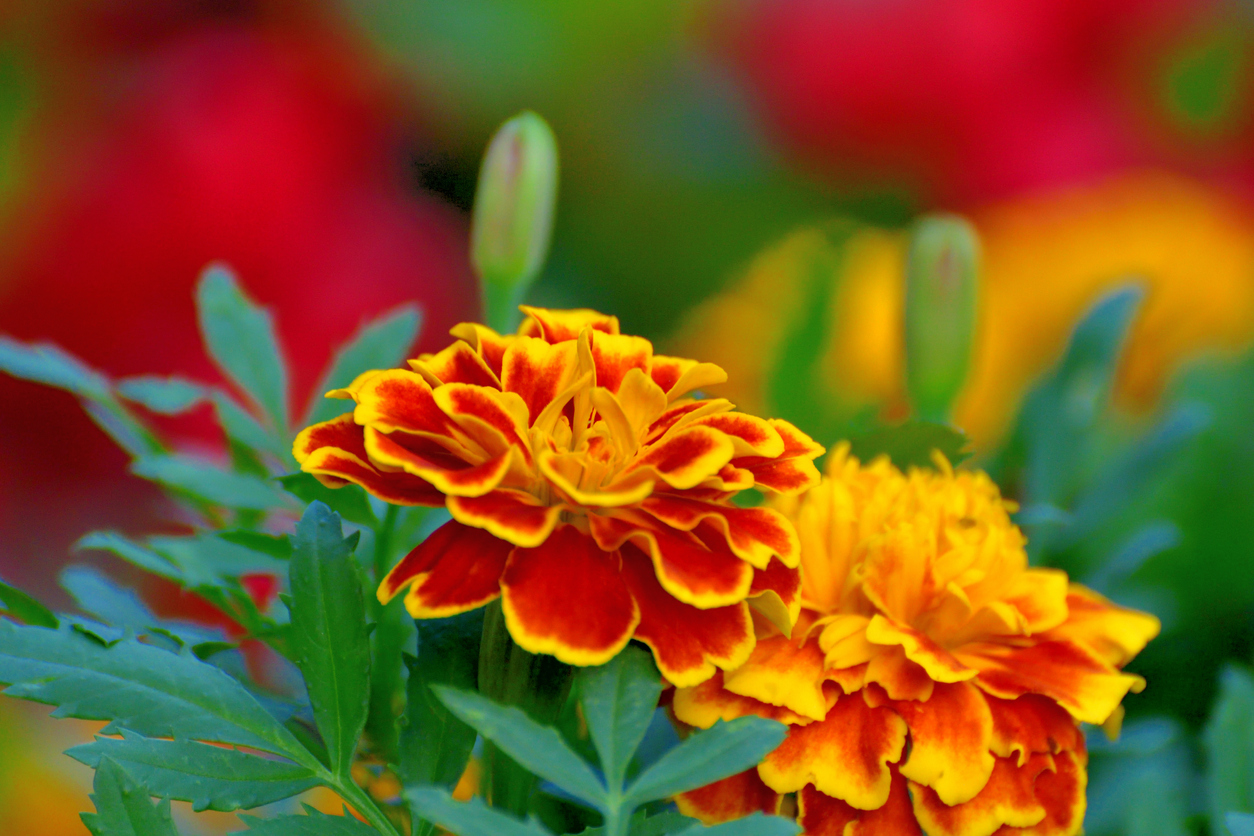
Popular, pollinator-friendly companion plants for fruits and vegetables, grow marigolds for carnation-like flowers from early summer to frost. Growing in most soils and full sun or partial shade, marigolds are suited to borders, containers, hanging baskets, and more. While there are many single and double form varieties, most are cheery shades of yellow, gold, orange, or multicolors. The most common species in the U.S. is the French marigold, which has long-lasting blooms.
Best For: Containers, the fronts of garden beds, and in or near vegetable gardens.
RELATED: The Best Container Plants for Full Sun
8. Nicotiana
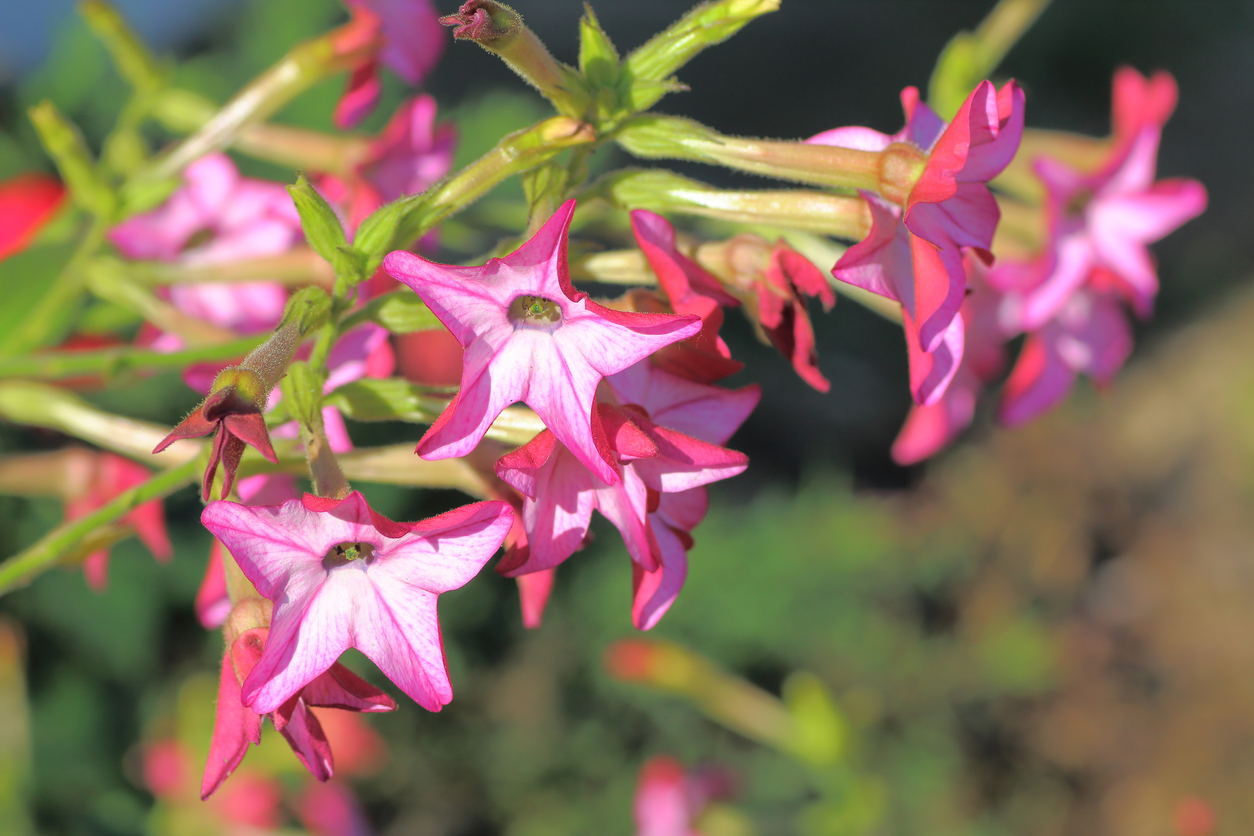
Nicotiana, also known as flowering tobacco, produces clusters of tubular, fragrant flowers that open in the evening on multi-branching stems. This annual prefers partial shade and well-draining soil, and it can grow up to 5 feet tall. Nicotiana produces elegant clusters of fragrant tubular flowers on tall stems that rarely need staking.
Common Nicotiana colors include white, pale pink, lavender, and vibrant violet, but some varieties produce apple-green, maroon, or red flowers. They bloom profusely until frost and can reseed. In mild climates, they can even survive winter.
Best For: Sunny mixed borders or nearby outdoor living areas.
9. Snapdragon
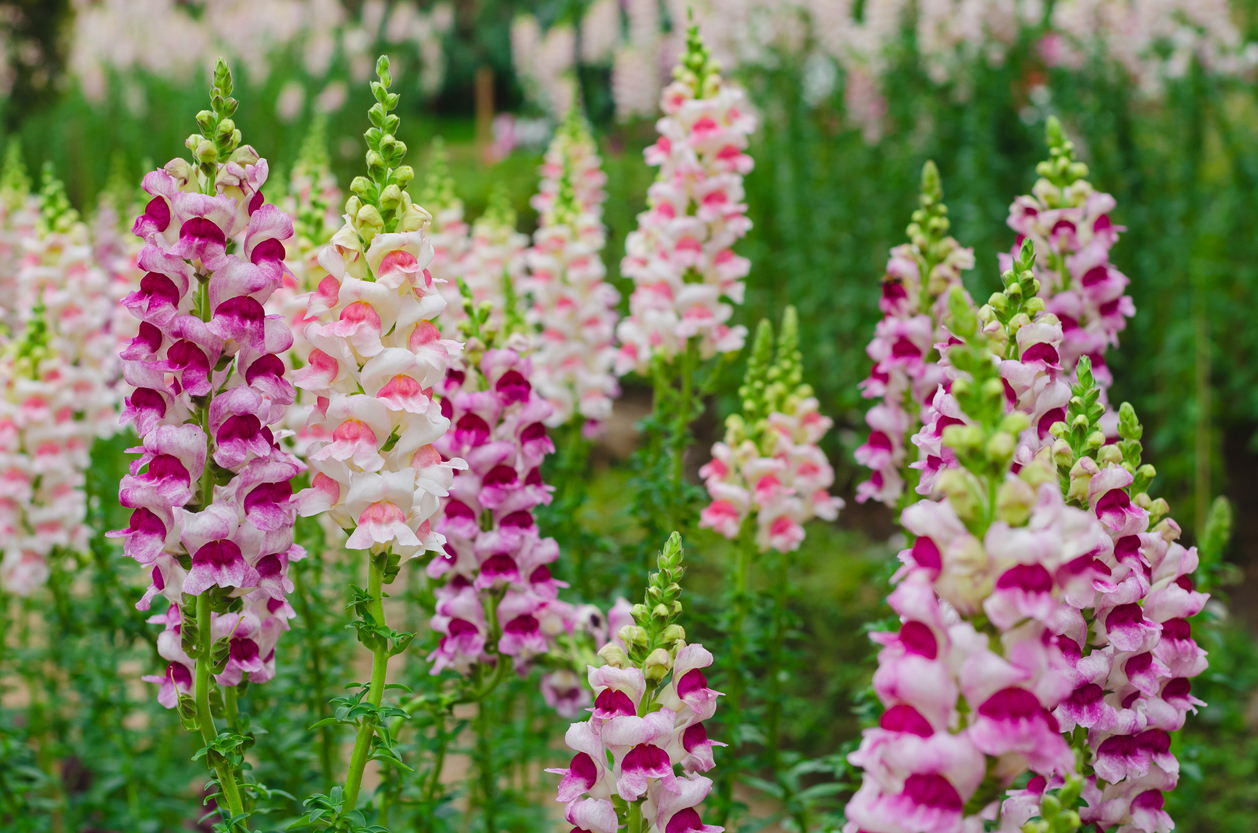
Snapdragon produces spikes of dense flowers on stalks that grow 1 to 3 feet tall, and both its flowers and foliage are fragrant. Because they can handle light frost, snapdragons are one of the first flowers gardeners can put out in spring. These annual flowers can bloom all summer but may struggle in hotter months, reviving again in cooler autumn temperatures.
Their two-lipped flowers have a mouthlike appearance and come in just about every color, including white, pink, violet, red, burgundy, orange, and yellow. Snapdragons do well in partial shade or full sun.
Best For: Containers or beds that get morning sun and afternoon shade in hot climates.
10. Phlox
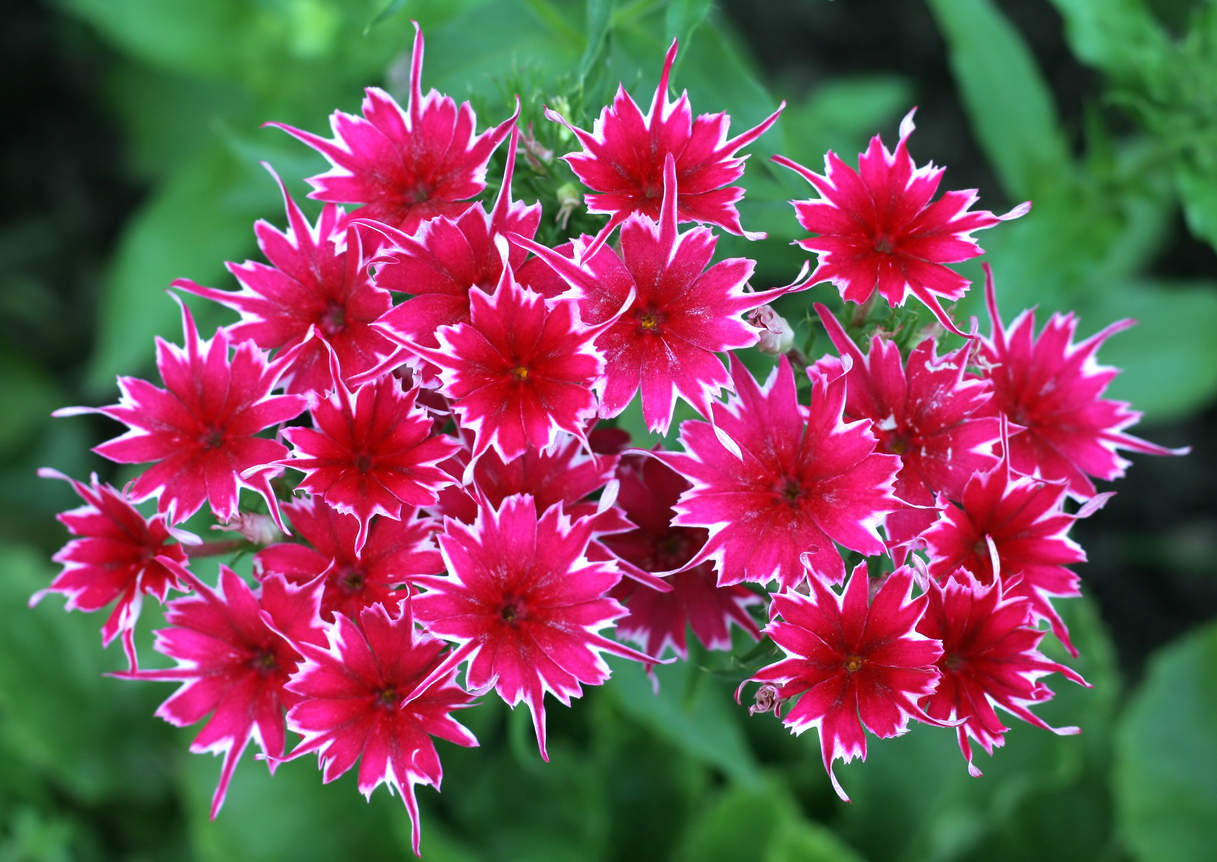
Phlox is an early-blooming annual that attracts pollinators with fragrant trumpet-shaped flowers, which range from white to pink, purple, and red. Its mounds of showy flowers appear in early spring, and the plant might produce a second bloom in cooler fall temperatures. Full sun to partial shade and well-draining soil are best for phlox. While deer-resistant and drought-tolerant, it doesn’t do well in summer heat.
Best For: Planting alongside spring bulbs, such as tulips and daffodils.
11. Petunia
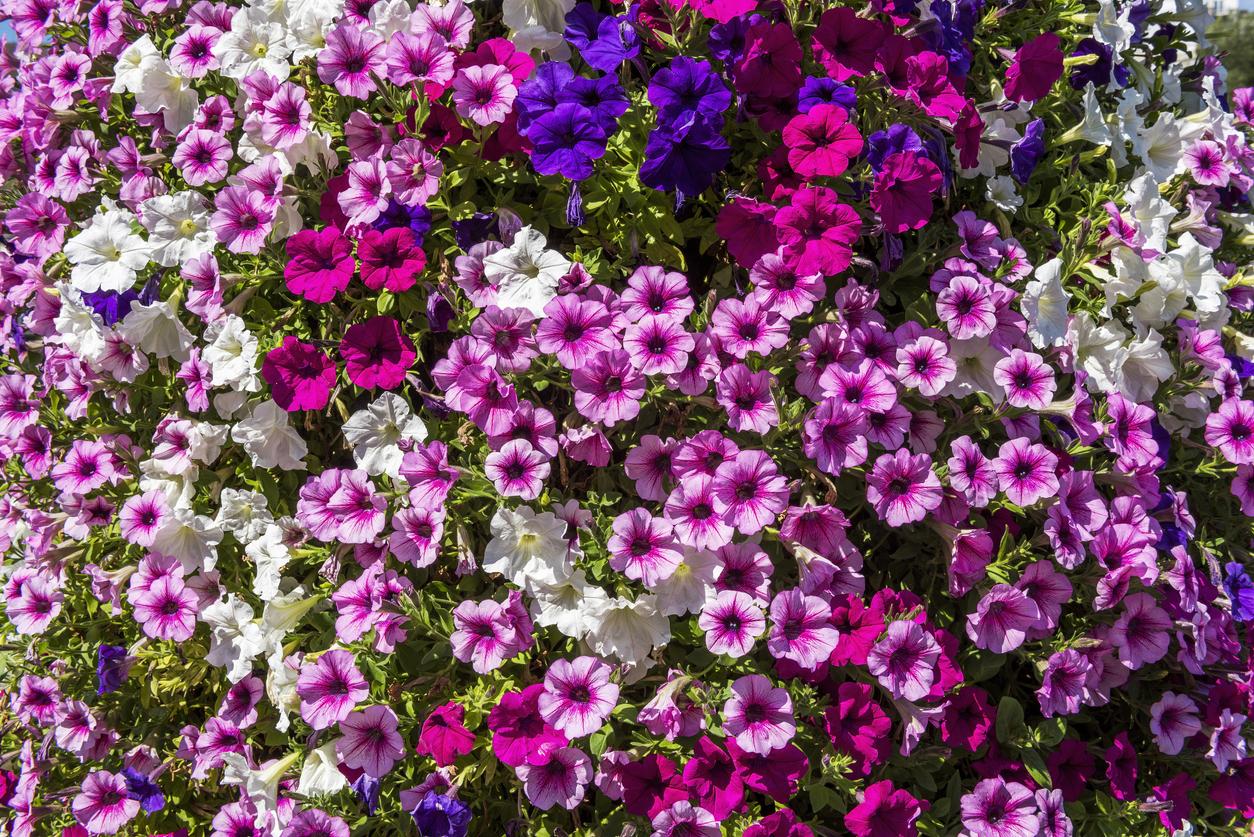
One of the most common annual flowers, versatile petunias offer light fragrance and long-lasting shades of white, pink, purple, red, and multicolor flowers. Typically reaching heights of 6 to 18 inches, they can spread 18 to 48 inches, making them a good choice for borders, containers, and hanging baskets. While they prefer full sun, petunias can get leggy in summer heat. They don’t bloom well in shade or in poorly draining soil, although they can tolerate most soil types.
Best For: Containers, hanging baskets, and borders in sunny sites near patios and entryways.
12. Salvia
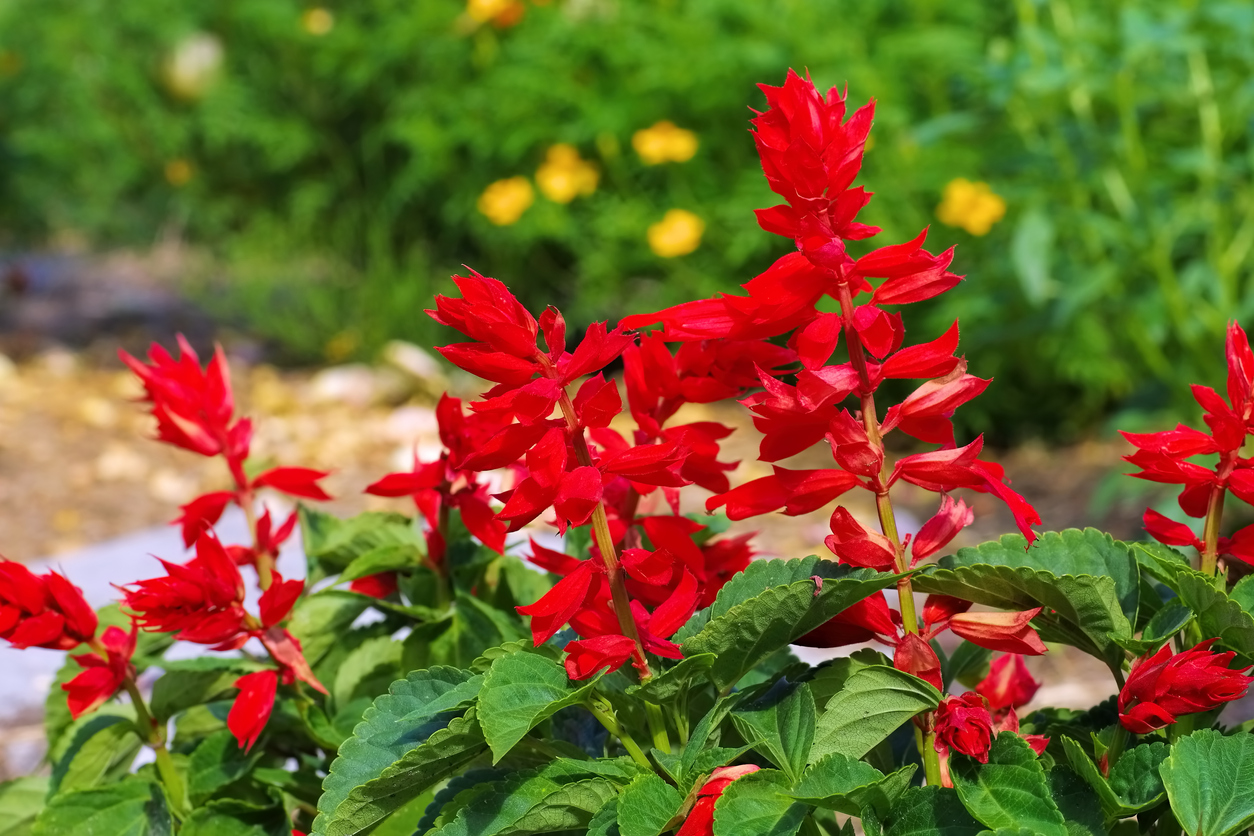
Salvia produces spikes of densely packed flowers with tubular blossoms. Most annual salvia varieties reach 12 to 24 inches high. Although bold red annual flowers are most common, salvia also produces blue annual flowers, as well as purple, salmon, and white flowers.
This drought-tolerant and heat-tolerant flower does well through midsummer heat with medium water. Salvias survive in partial shade but flower best in full sun. While pollinators are attracted to them, some pests are not. These are annual flowers that deer won’t eat, thanks to their velvety leaves’ odor.
Best For: Pairing with shorter mounding flowers in full-sun borders and containers.
13. Sweet Alyssum
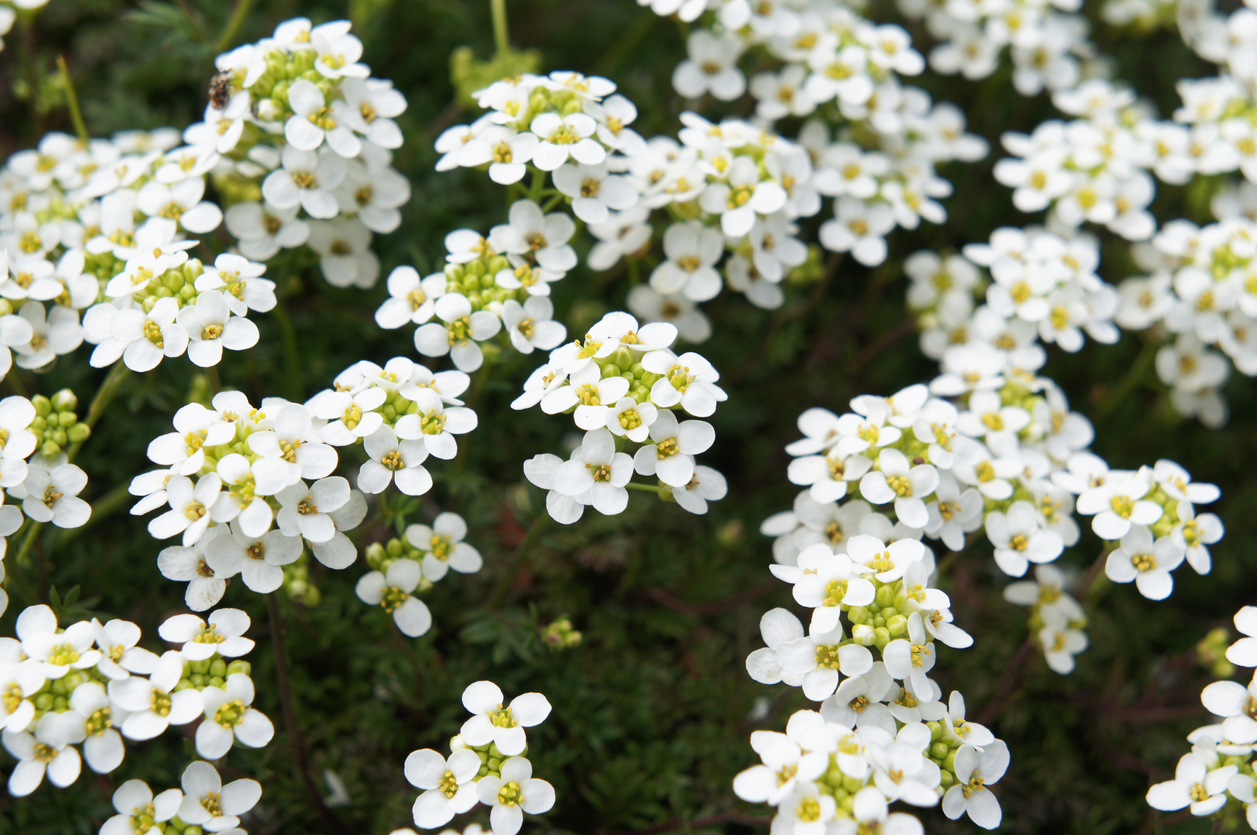
A low-growing, self-sowing spreader, sweet alyssum is often considered a ground cover—and invasive in warm climates. Reaching only 3 to 10 inches tall, it’s an excellent filler for containers, “spiller” in hanging baskets, or flower for a low border, where it will spread a honey-like fragrance.
Easy to grow, sweet alyssum is a cool-season annual flower that can be started in early spring. It can become leggy during summer but often reinvigorates in autumn. Its tiny cross-shaped flowers come in white, lavender, or purple, and its lance-shaped foliage is gray-green.
Best For: Filler in containers and borders.
RELATED: 15 Flowers That Attract Butterflies
14. Pansy
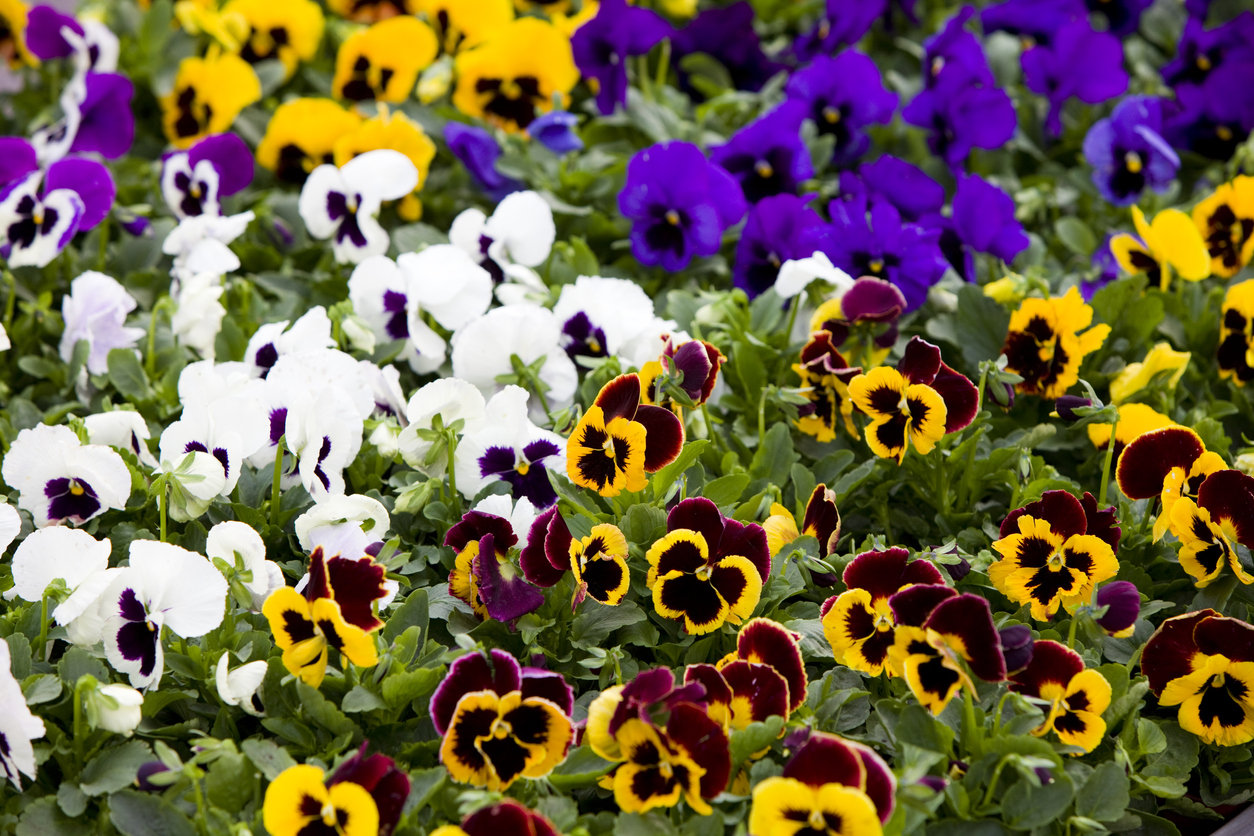
These cool-weather annual flowers with a “face” announce spring’s arrival. Pansies won’t tolerate heat and begin to fade in summer, but they’re a welcome sight in early spring before other plants can be set out (as early as fall and winter in mild areas).
Pansies are vigorous, fast growers that aren’t fussy—although they prefer loose, rich, moist soil, and while they tolerate full sun, they do better in partial shade. Given the right conditions, they produce heart-shaped petals that overlap in colors of white, yellow, purple, blue, and bronze, with markings reminiscent of a happy face.
Best For: Off-season color in beds, window boxes, and containers.
15. Sweet Pea
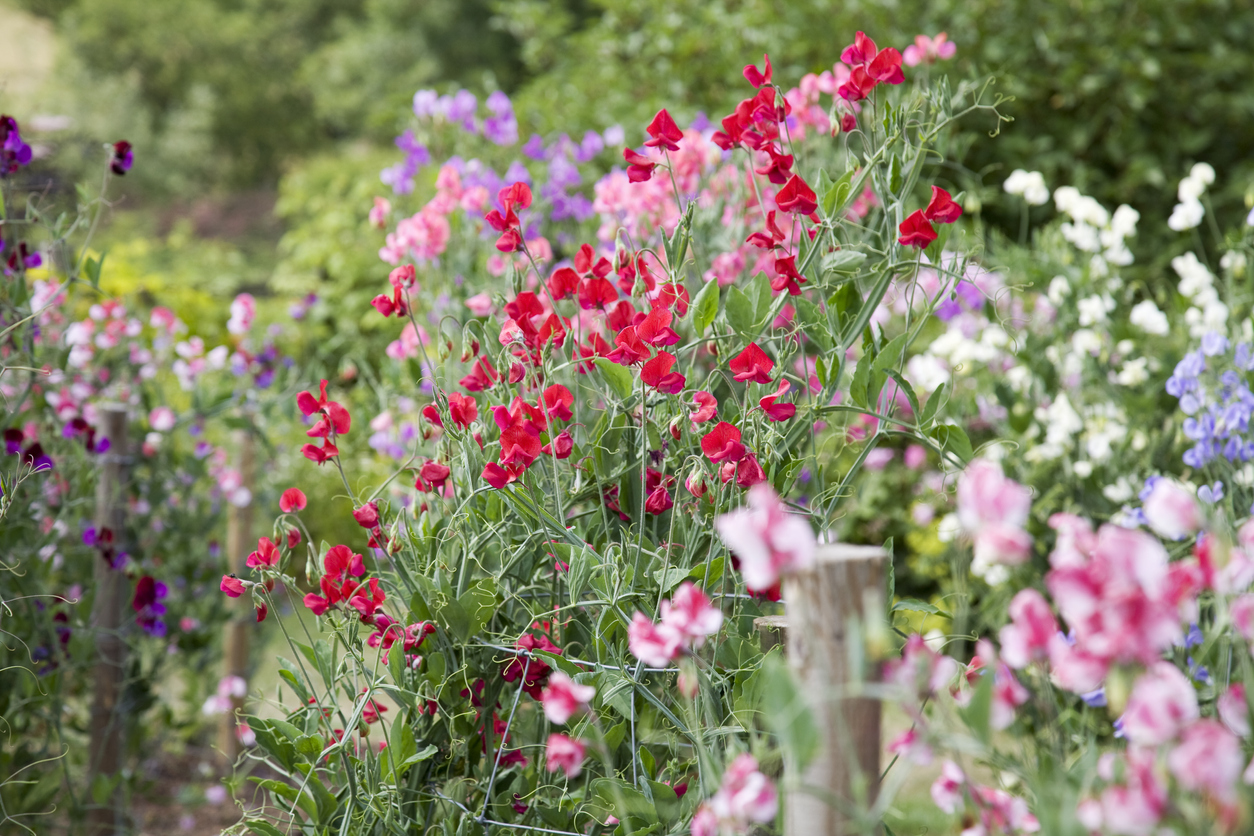
Resembling an orchid or a butterfly, sweetpea flowers are intensely fragrant climbing annuals often seen in cottage gardens. Reaching 6 to 8 feet long, sweet peas produce multitudes of pink, lavender, white, red, and blue flowers in spring and early summer; some types bloom through the first frost in fall.
Sweet peas prefer rich, well-draining soil and full or partial sun, and they require some support to cling to as they climb. Despite its beauty and pleasing perfume, sweet pea is toxic to people and pets.
Best For: Full-sun locations in need of spreading or rising color.
16. Geranium
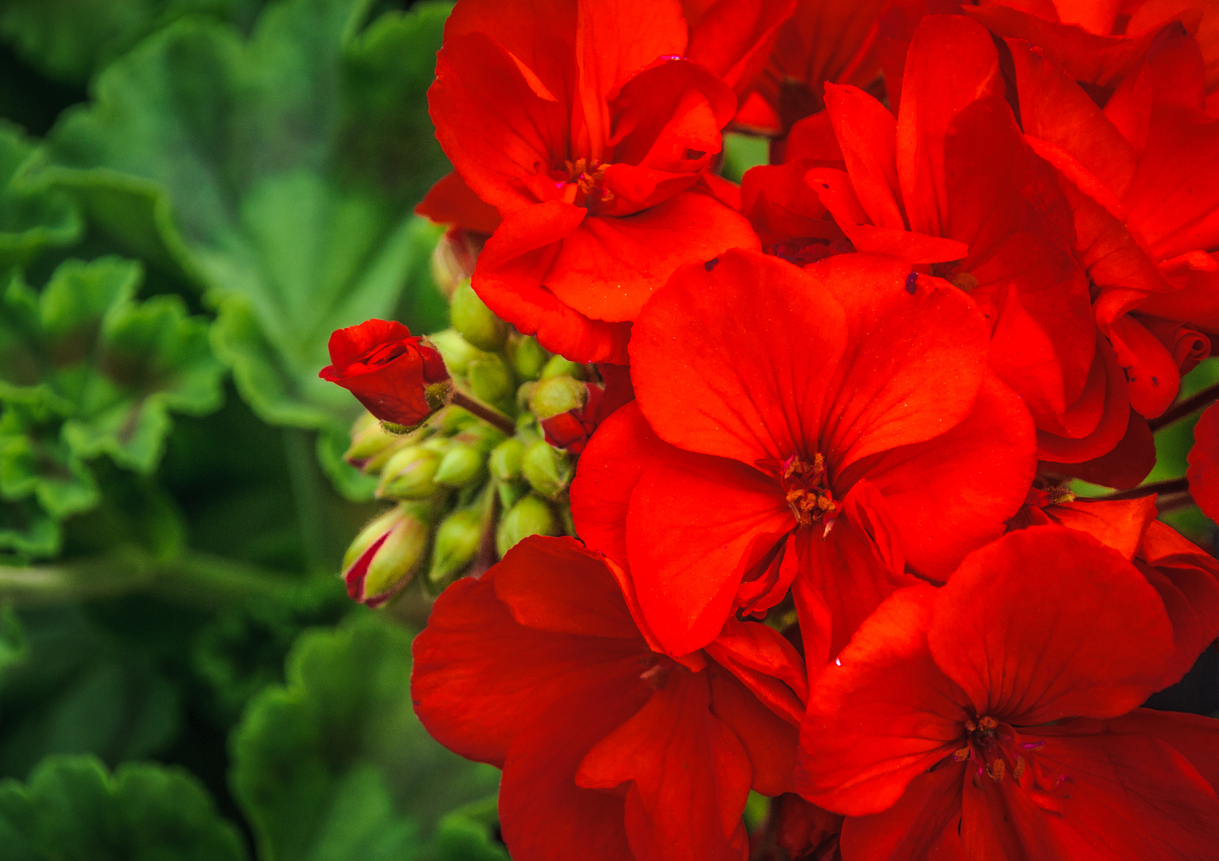
A gardener favorite for over 100 years, the annual plant commonly known as the geranium is actually Pelargonium. These staple annual flowers that bloom all summer need well-draining soil and full sun for optimal growth and flower production.
Zonal geraniums are recognizable by the band of color on their round, scalloped, slightly fragrant (and sometimes variegated) leaves. Ivy geraniums have a different leaf shape and are trailing plants. Geranium flower colors include white, pink, red, and coral. They can often be overwintered inside and are easy to propagate with stem cuttings.
Best For: Beds, hanging baskets, and containers that get full sun.
17. Dianthus
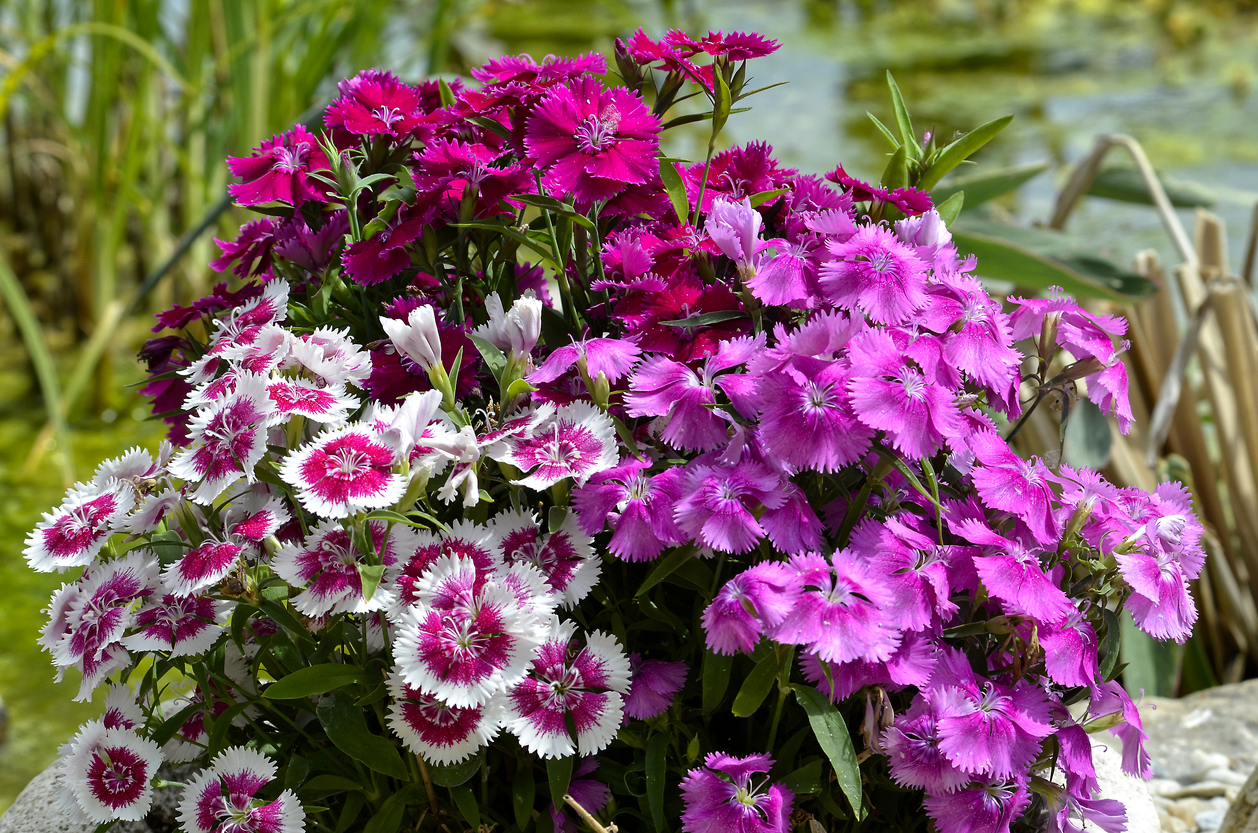
Also called pinks or sweet William, Dianthus flowers are related to carnations. Growing 6 to 18 inches tall, the annuals feature gray-green sword-like foliage and fragrant, ruffled flowers in white, pink, red, and salmon. The flowers are either single or double, some featuring a ragged edge.
Many modern Dianthus varieties typically bloom May to October in full or partial sun and fertile, well-draining soil. They require water only when the soil is dry and fertilizer every couple months, making care easy. They are self-sowing and can be considered biennials in some regions.
Best For: Sunny or partially shady areas and low borders.
18. Pentas
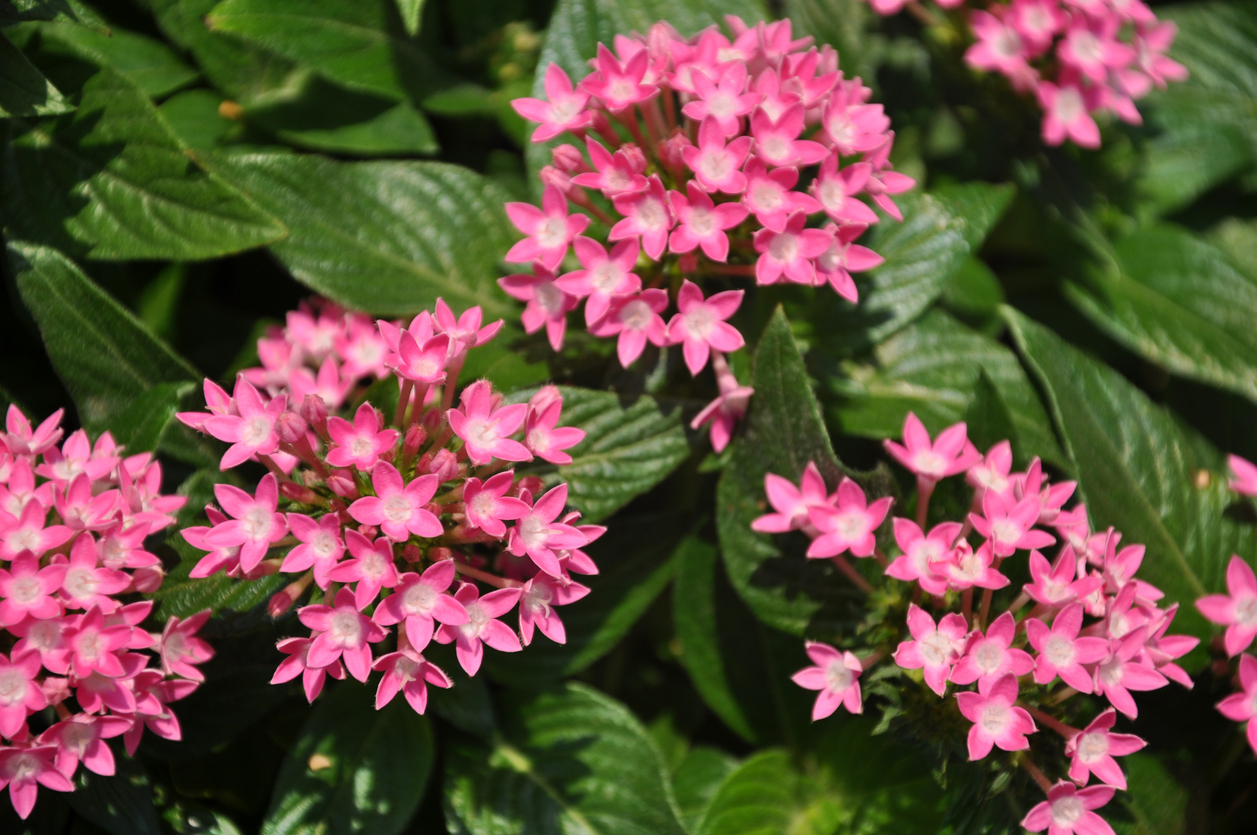
Outside of the tropics, pentas are grown as annuals. This low-maintenance plant blooms all summer, even during the hottest days. One of the best pollinator plants, it produces clusters of tiny star-shaped flowers in white, pink, purple, or red on blue-green foliage. Pentas requires full sun and well-draining soil. It grows 1 to 3 feet tall and spreads up to 4 feet, but its overall habit is neat and compact.
Best For: Garden or patio centerpieces, or containers that get plenty of sun.
19. Lantana
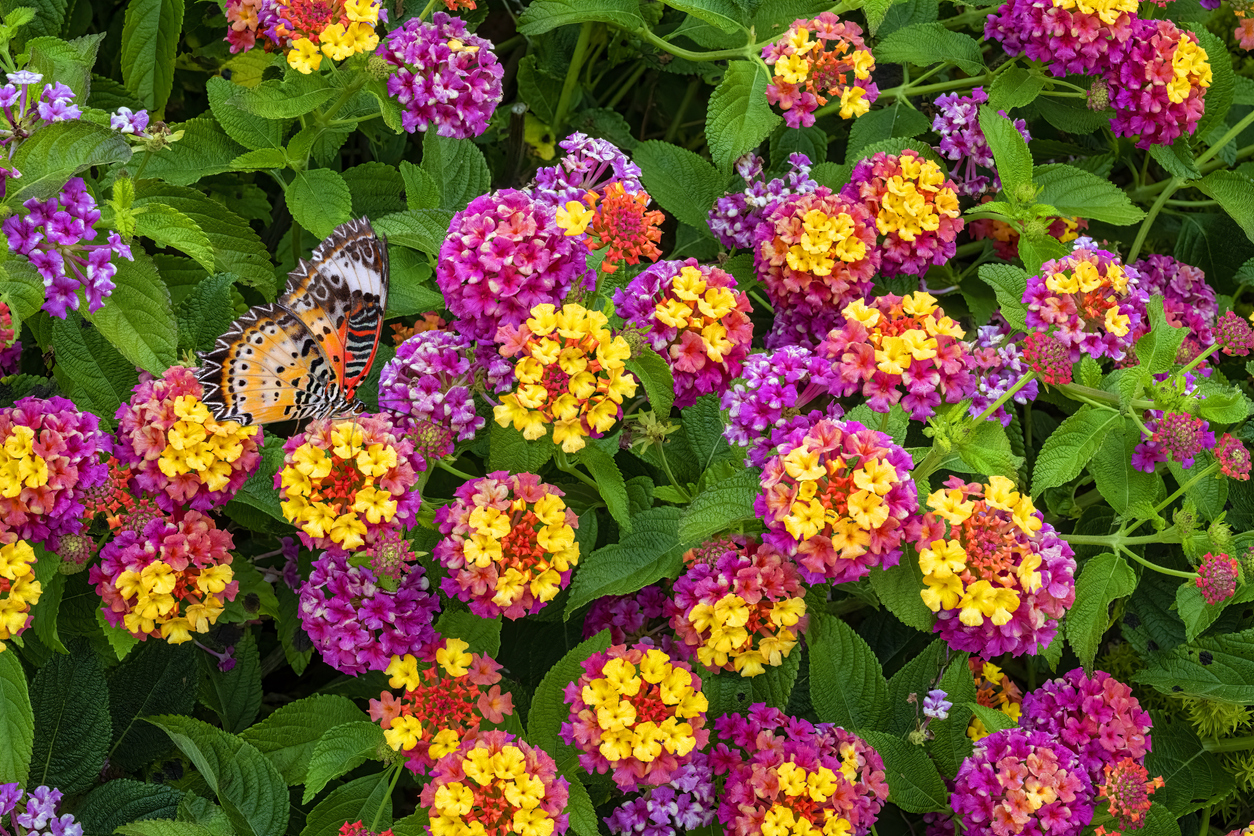
Technically a shrub (and a perennial in USDA hardiness zones 9 through 11), this sprawling woody-stemmed plant is good for ground coverage or hanging baskets. Lantana is a fast-growing annual that produces rough aromatic leaves and rounded clusters of small bright flowers in yellow, orange, red, pink, or purple—often mixed on the same bloom.
The easy-to-grow lantana likes full sun and well-draining soil, but it does not like to dry out completely. Although it attracts pollinators, lantana is toxic to pets.
Best For: Well-draining beds or containers in full-sun pollinator gardens.
20. Portulaca
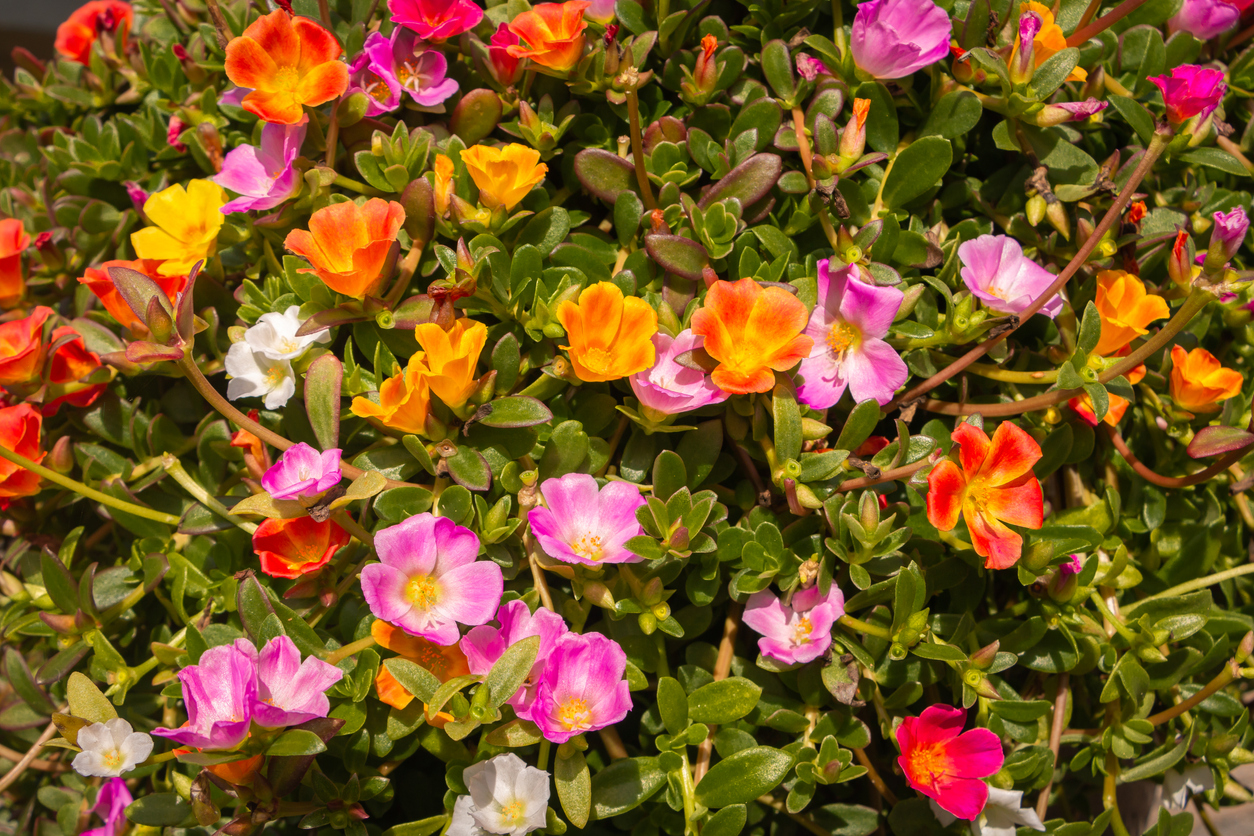
Portulaca, also called moss rose, is a low-growing annual that thrives in full sun. It prefers well-draining soil but can tolerate heat and drought conditions, and it’s well suited to planting in rock gardens and sandy soil. It grows up to 8 inches tall and spreads up to a foot.
Its soft pink, yellow, orange, red, and purple multi-petaled flowers close at night and on cloudy days. Its thick succulent leaves cascade for an attractive look in hanging baskets and containers.
Best For: Hot, dry climates, poor soil, and shallow containers.
21. Calibrachoa
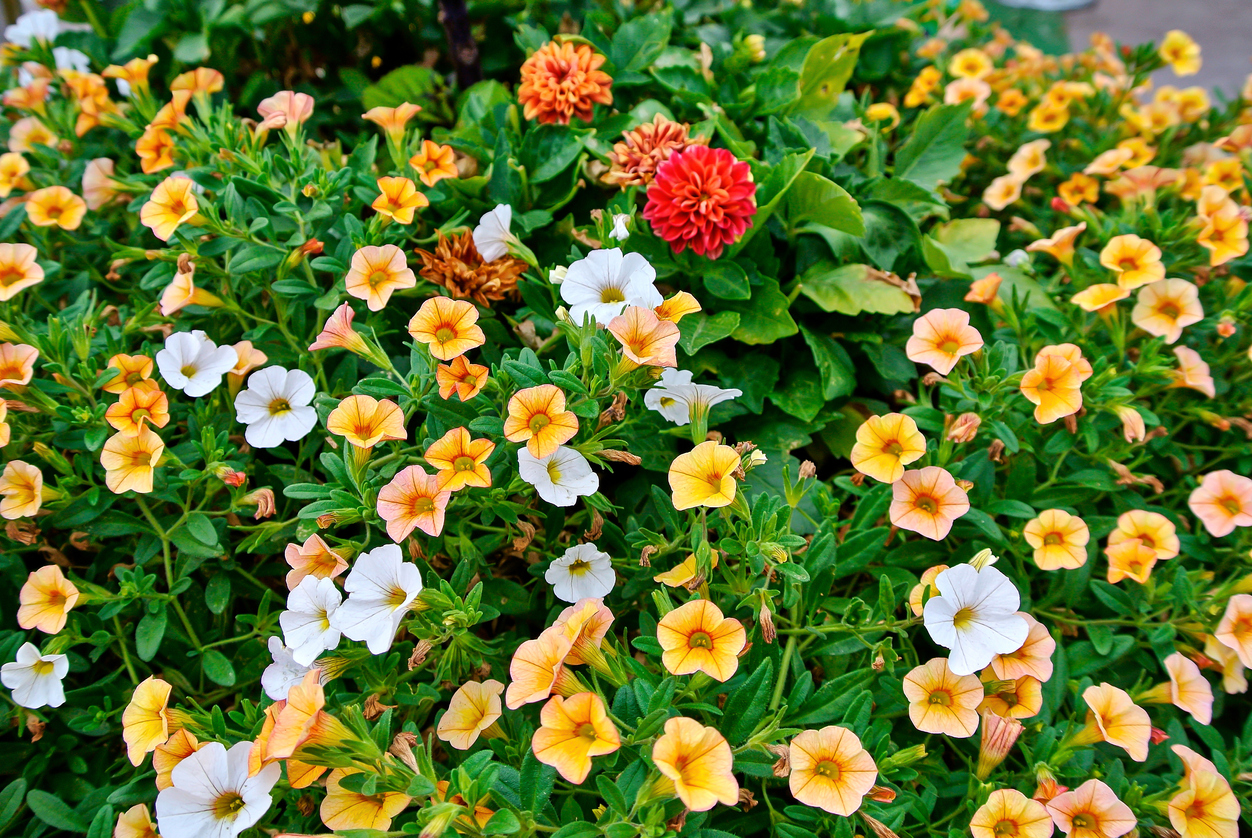
Sometimes called million bells, calibrachoa is a hybrid annual resembling miniature petunias. Growing only 3 to 9 inches tall, this “trailing petunia” comes in shades of white, pink, violet, magenta, red, bronze, blue, and yellow annual flowers. As the name indicates, it produces hundreds of bell-shaped flowers.
Calibrachoa likes full sun, regular fertilizing, and moist, rich, well-draining soil with a balanced-to-low pH. It may require light shade and extra water during hot summers.
Best For: Hanging baskets and containers, or ground cover in rock gardens and small beds.
22. Vinca
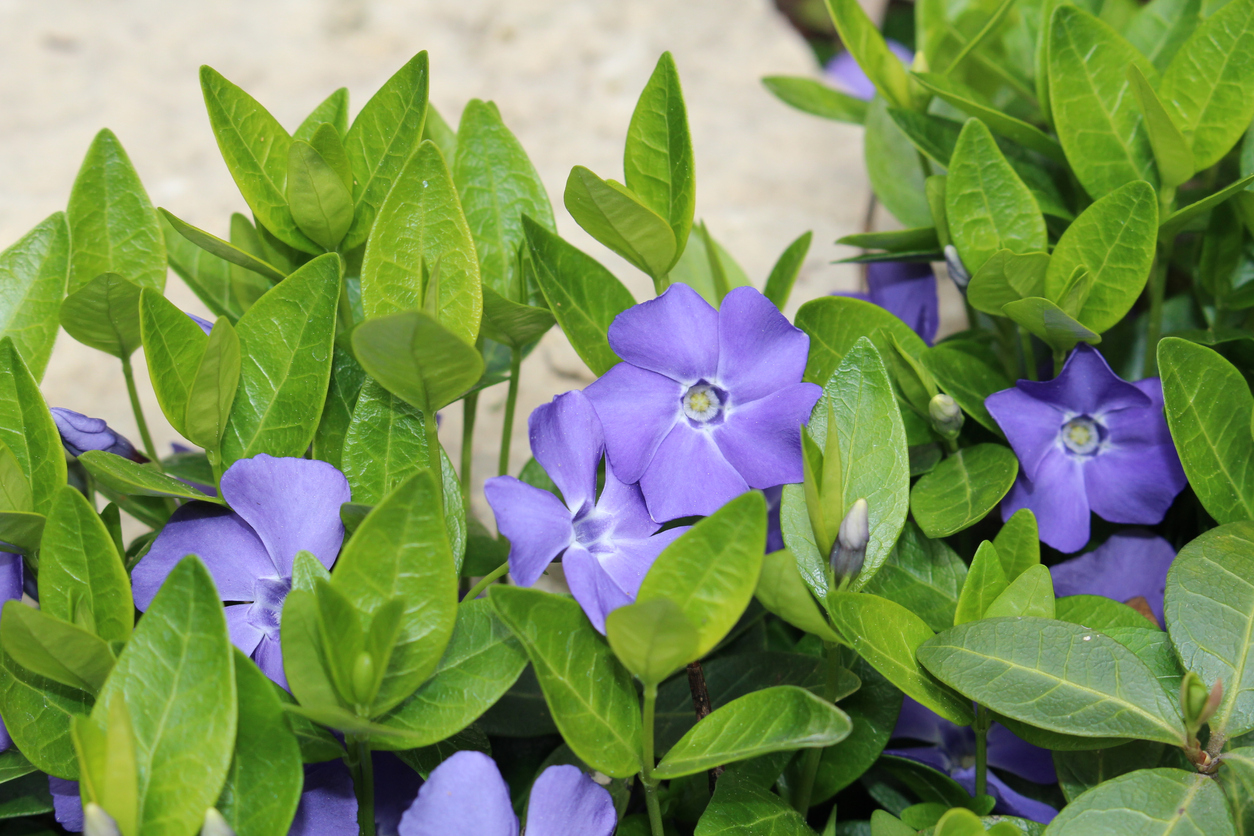
This low-maintenance, compact plant features shiny green leaves and an abundance of five-petaled flowers in white, pink, lavender, purple, and red. Contrasting centers enhance the petal color. Vinca blooms profusely from spring to frost, attracting butterflies. Because it’s heat-tolerant, vinca will continue flowering all summer.
Growing to about 15 by 15 inches, vinca is a compact plant suitable for flower beds, borders, and containers. It requires full sun (although it can tolerate partial sun), well-draining soil, and regular watering (although it can survive moderate drought).
Best For: Low-maintenance landscapes.
23. Scaevola
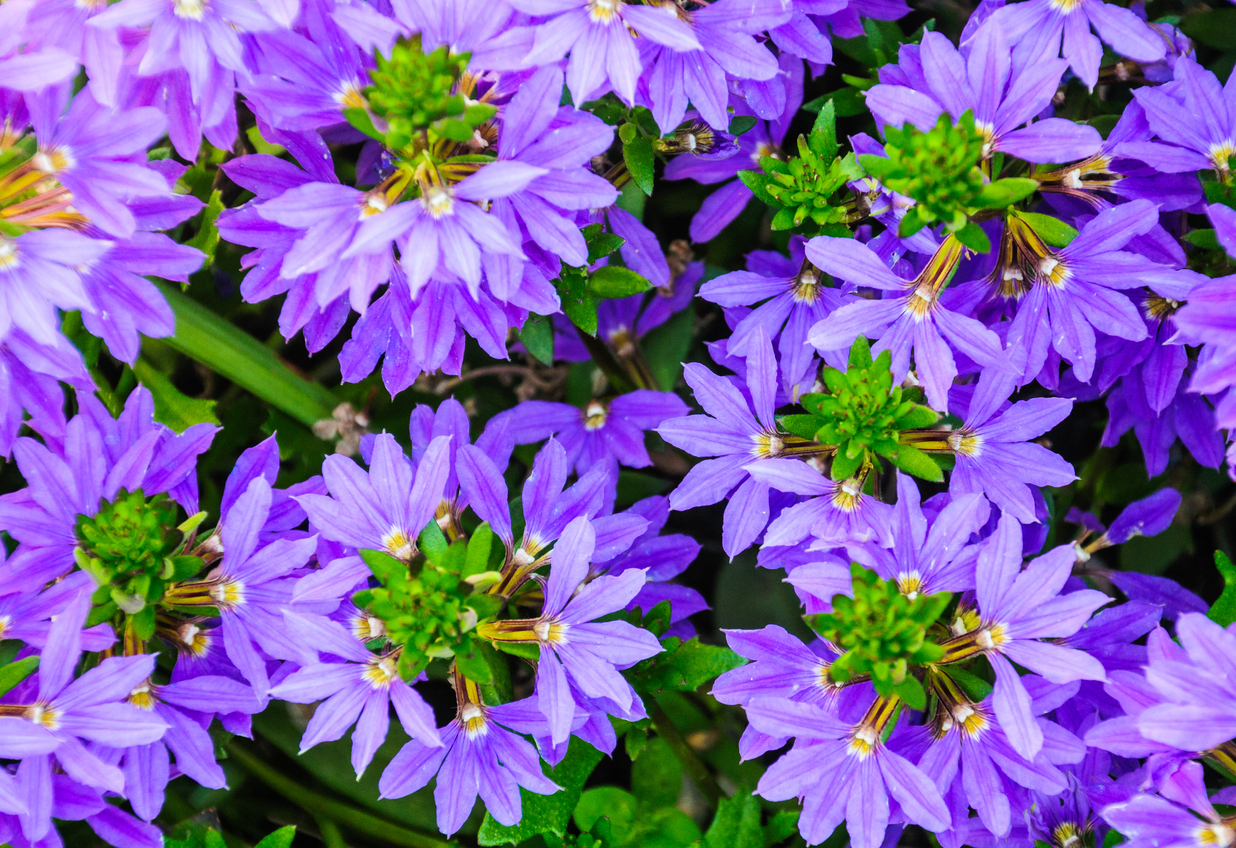
Known as the fan flower, Scaevola looks as if half its daisy-like petals are missing, giving rise to another nickname: half flower. This Australian native is a tough plant that thrives in heat, drought, and poor soil. It likes full sun but will tolerate light shade. Scaevola attracts butterflies and other pollinators, but it is one of the annual flowers deer won’t eat.
Bloom colors include white, pink, purple, and blue. Flowers have yellow and white throats, making an eye-catching contrast with their five petals. The plant grows 6 to 12 inches tall and can spread up to 2 feet.
Best For: Containers, hanging baskets, and rock gardens.
RELATED: 14 Old-Fashioned Flowers That Still Look Great in Today’s Home Gardens

